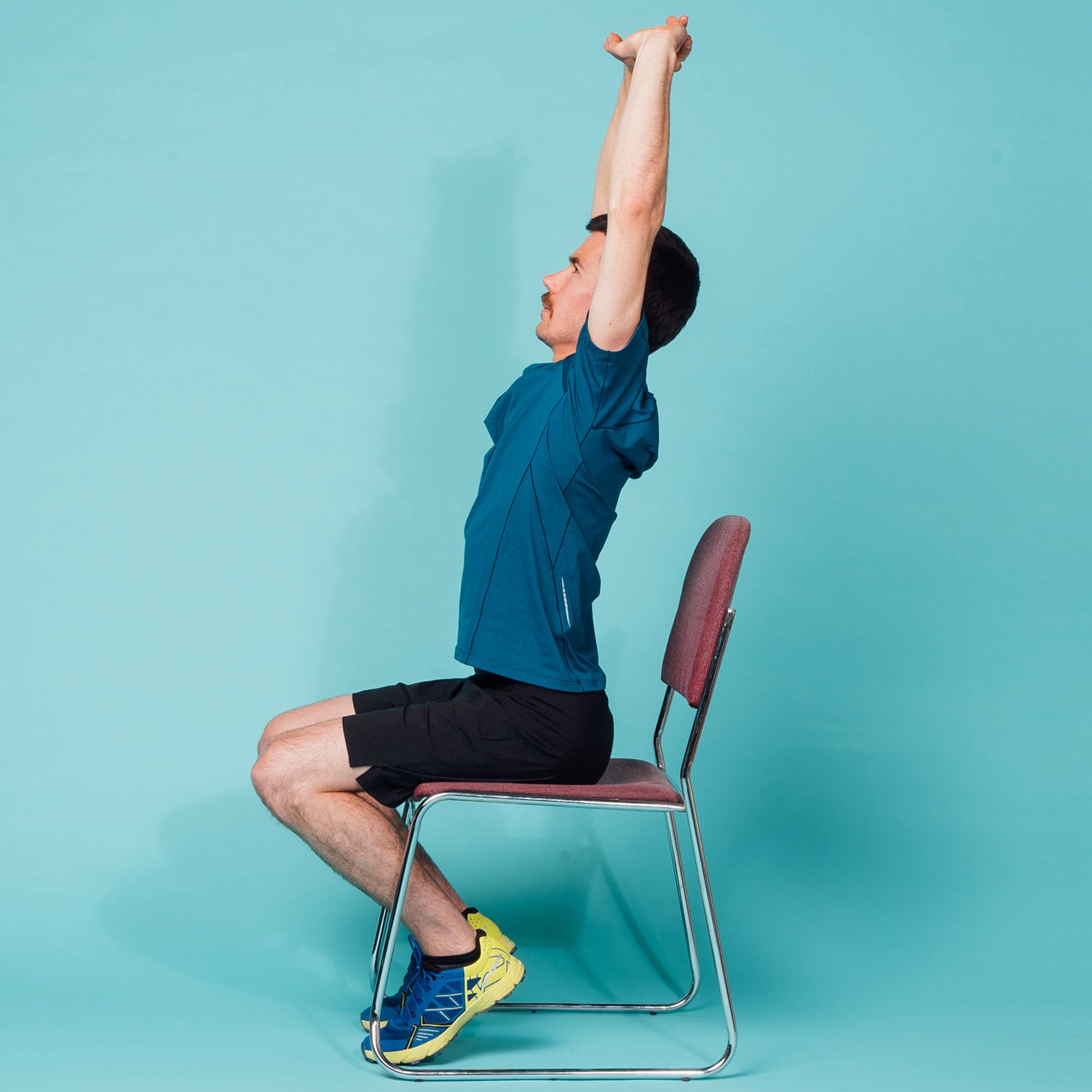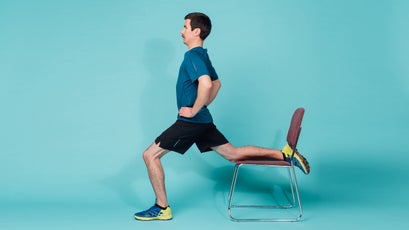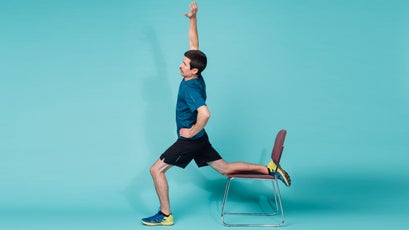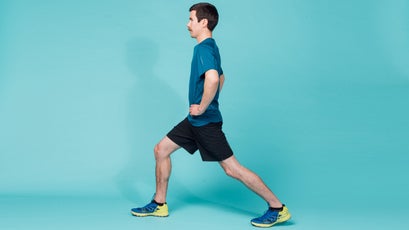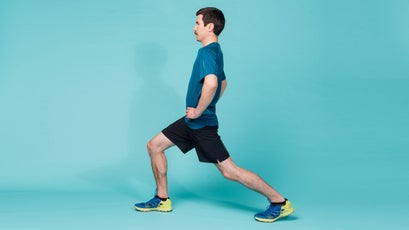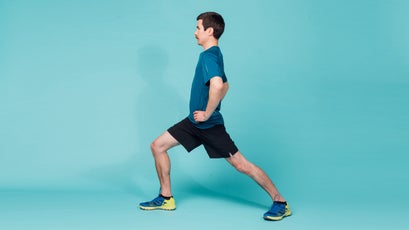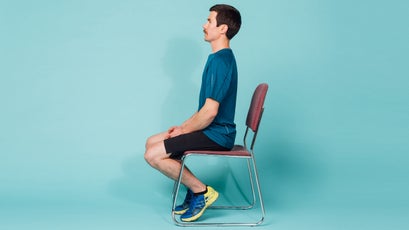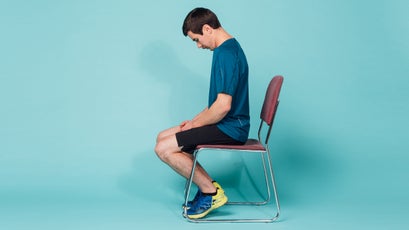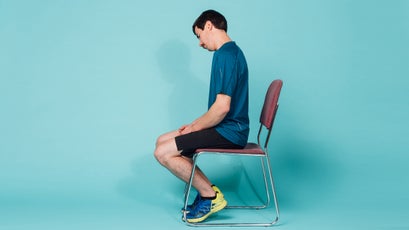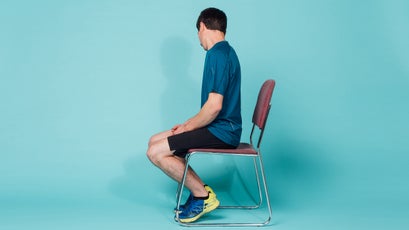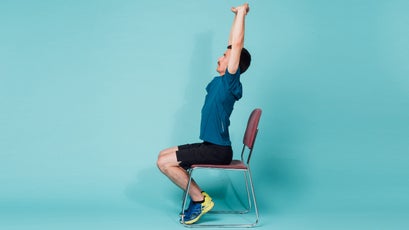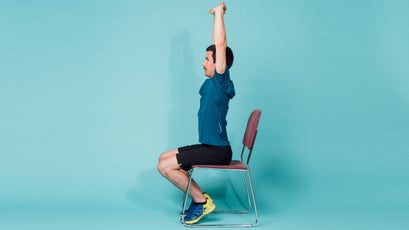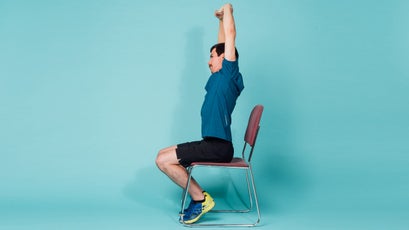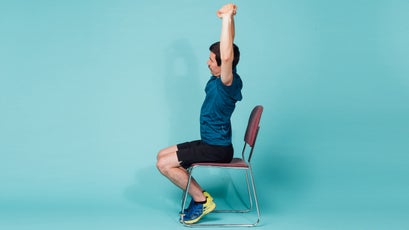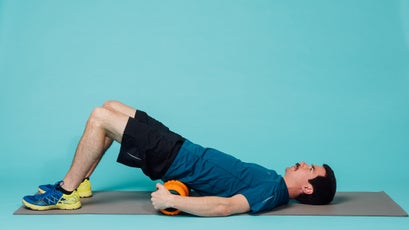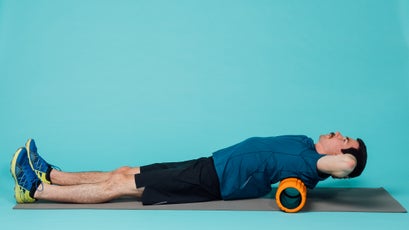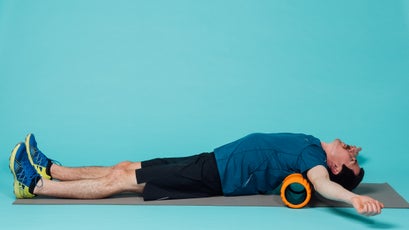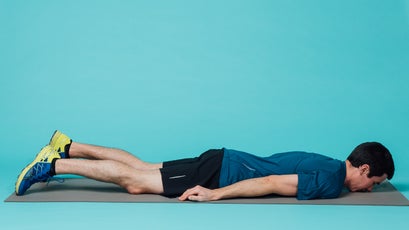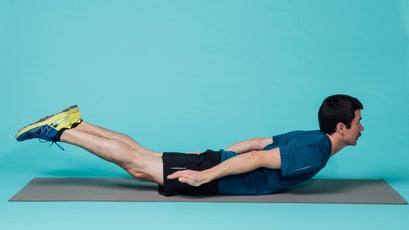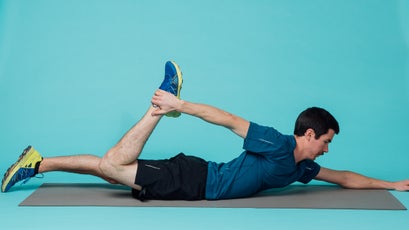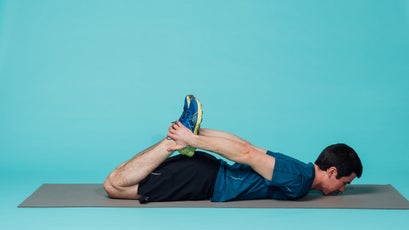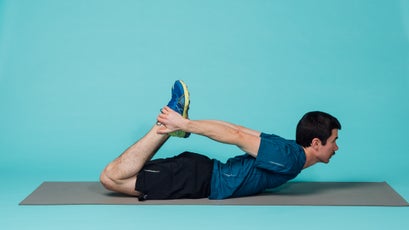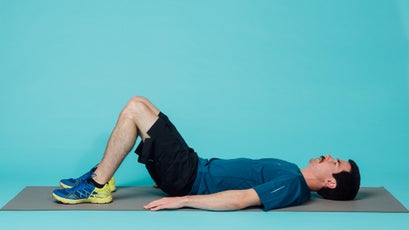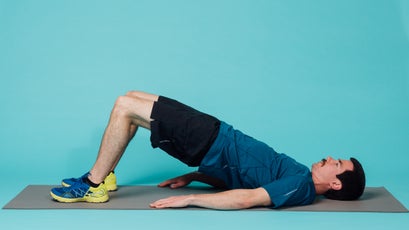Humans are meant to move. Unfortunately, sedentary behavior is an unavoidable consequence of modern-day life. Extended time in a chair can lead to all kinds of negative outcomes: it’s hard on your hip flexors and your spine, and it weakens your core and your glutes. Plus, studies have linked long periods of sitting to a decrease in overall health and a shorter life span.
The best fix would be to move more during the day, but that’s not always possible. The next-best solution is to stretch and strengthen the affected muscles, says Sage Rountree, a North Carolina–based endurance-sports coach and the author of Everyday Yoga and The Athlete’s Guide to Yoga. You’ll want to start by releasing the tightness that’s developed in your back, shoulders, chest, and core, and then activate and strengthen those muscles, she says.
Below, Rountree shares her favorite moves to target the muscles affected by sitting. She recommends doing them at least once a day. The first five exercises can be done anywhere, while the remaining five require floor space and props, like a yoga block, yoga mat, or foam roller. Do what you can on the fly, even if that’s just one or two moves every half-hour while you work. The whole routine should take 10 to 15 minutes.
As for intensity, remember: you’ve been sitting still. Your heart rate is low, your muscles are cold and stiff. These stretches should be gentle and feel good. “Only go to the point where it feels kind of interesting, where you can breathe completely naturally, even deeply,” Rountree says. “This is supposed to be a treat, not a chore.”
Focus on your breath—slow inhales, slow exhales. “That’s the secret ingredient here, because it can help you relax and refocus,” she says. “Do it all with attention to breath.”
The Moves
Desk-Chair Lunge
What it does: Stretches the hip flexors and quads.
How to do it: Stand in front of a non-rolling desk chair, lift one leg, and place your shin on the seat. Carefully hop your other foot forward to enter a lunge stance. On the forward leg, your knee should be directly above your ankle, not beyond your toes. Pull in your belly and tuck your tailbone down to tilt your pelvis forward, and gently sink your hips to stretch the hip flexors of your back leg. If you feel stable, lift the arm on the side of your back leg and gently lean toward the opposite side to deepen the stretch through the hip flexors and into the obliques. Hold for 15 to 30 seconds.
Crescent Lunge to Warrior One
What they do: Stretch the anterior chain from your quads and hip flexors through the abs to your chest.
How to do them: To get into a crescent lunge, enter a split stance, with your feet pointed forward, your back leg straight (or with a slight bend to focus on the quads over the hip flexors), and your front knee bent over your ankle. Come up onto the ball of your back foot. Drive your trailing hip forward to square your pelvis. Place your palms together, and reach overhead to open your chest and abdomen. Then gently lower your hips further into the lunge. Hold for a few breaths, or 15 to 30 seconds.
To move into warrior one from crescent, turn your back foot out to a 45-degree angle, straighten that leg, and put your heel down. Re-square your pelvis, continue to reach overhead, and gently sink your hips again to increase the stretch. Hold for a few breaths, or 15 to 30 seconds. Repeat both poses with the opposite leg forward.
If you’re near a doorframe, you can do both of these in the opening. Place your forearms vertically along the frame, with your elbows bent between 90 and 120 degrees (play with different arm positions to see what feels best). As you sink deeper into the poses, relax your shoulders and puff your chest through the door to stretch the pecs and shoulders.
Posterior Neck Stretch
What it does: Slouching in front of a computer screen causes your chin to jut forward and the muscles along the back of your neck to tighten in order to hold your head level. This simple stretch returns length to the back and sides of your neck.
How to do it: Sit or stand upright with your spine straight, shoulders relaxed, and neck centered in a neutral position. Tuck in your chin, and let gravity gently pull your head down to stretch the back of your neck. Hold this position for 15 to 30 seconds. Lean your ear toward your shoulder, followed by your nose, to target different muscles along the side of your neck. Hold each of these positions for 15 to 30 seconds, then repeat on the other side.
Torso Stretch
What it does: Lengthens the spine and stretches the core, including the abs, obliques, and intercostal muscles between your ribs.
How to do it: Sit or stand upright, with your spine straight, your shoulders relaxed, and your neck centered in a neutral position. Interlock your fingers, and stretch your arms overhead, palms toward the ceiling. Take a few deep breaths, then gently lean back to open your chest and target your abs. Hold for a few breaths, return to the center, then lean to one side. Continue to reach toward the ceiling, finding length along the side of your body from your wrist through your shoulders and obliques to your hip. Hold for a few breaths, then repeat on the other side.
For the following floor exercises, start with the two backbends to loosen the front of your body before attempting the others. “These are the prerequisites for moves where you engage the back of your body, because otherwise you’re just fighting against the tightness that accumulated over your workday,” says Rountree.
Supported Low Backbend
What it does: Stretches the hip flexors.
How to do it: Lie on your back, with your feet flat on the floor. Lift your hips, and place a yoga block, foam roller, rolled yoga mat, or folded beach towel under your pelvis. Position the prop perpendicular to your body and under your glutes so that its upper edge aligns with your iliac crests (the top ridges of your pelvis) below your low back. Slowly extend your legs to increase the stretch on your hip flexors. It’s OK if your toes come up, but keep your heels on the floor. If you need more of a stretch, hug one knee to your chest to better target the opposite hip. Hold, then switch sides. Aim for around 25 breaths, or two to three minutes total.
Supported High Backbend—Upper Back
What it does: Extends the thoracic spine (upper back) and opens the chest to help correct poor posture.
How to do it: Lie on your back, with your legs straight and the same prop perpendicular under the base of your shoulder blades. Relax and tilt your head back to open your chest. If you have a tall prop, like a foam roller, interlock your fingers behind your head to support your neck. Otherwise, extend your arms out to the sides in a T shape with your palms up, to stretch the front of your shoulders. Move them overhead to form a Y, or bend your elbows to form a wide or tight W. Experiment with different positions. Hold the stretch for around 25 breaths, or two to three minutes.
Locust Pose
What it does: Activates the posterior chain along the back of the body to reset your posture and wake up the muscles that were held slack all day, like your glutes and hamstrings. This serves as a good warm-up for deeper backbends, like the bow pose.
How to do it: Lie flat on your belly, with your arms along your sides, palms down and thumbs out. This places your shoulders in external rotation—the opposite direction of the typical deskbound typing position. Reach back with your fingers and point your toes. Press your pubic bone into the floor to tilt back your pelvis. Engage your lower back, and lift up through the crown of your head to raise your torso and legs off the floor. Hold for five to ten breaths, then slowly lower your body to the floor.
Play with different arm positions to change the leverage and activation of different muscle groups of the upper back and shoulders. Hold them off the floor and straight out to the sides in a T shape. Move them overhead to form a Y. Bend your elbows to form a wide or tight W. Do little flutter kicks (without rocking your hips side to side) to bring the hamstrings into play. Chase what feels good.
Half- and Full-Bow Pose
What it does: Activates and strengthens the back muscles while stretching the quads, hip flexors, abs, chest, and shoulders.
How to do it: To get into the half bow, lie flat on your belly with your legs together. Bend your right knee, reach your right hand back, and grab your ankle from the outside. If you can’t reach your foot, loop a towel or jacket around it and hold the ends. If this feels challenging enough, stay here. If you’re ready to go deeper into the stretch, slowly kick your foot backward into your hand to lift your chest and thigh off the floor in a half backbend. Raise your free arm straight in front of you or back along your side like in locust pose. Hold for five to ten breaths, then slowly lower your body to the floor. Repeat on the other side.
To get into the harder full bow, lie flat on your belly, bend both knees, and sweep both arms back to grab your ankles from the outside. Slowly press your feet against your hands to lift your chest and head off the floor. Continue to kick up and back with your ankles to lift your thighs, and raise your chest even higher. Hold for five to ten breaths, then slowly lower back to the floor.
Bridge Marches
What it does: Activates and strengthens the glutes, hamstrings, and spinal erectors (lower back), while gently stretching the hip flexors and the back of the neck. If your neck isn’t happy with this, stop, and talk to your physical therapist.
How to do it: Lie on your back, with your knees bent and your feet flat on the floor. Place your arms at your sides, palms down. Engage your abs to flatten the natural curve of your lower back. Squeeze your butt, back, and hamstrings, press down through your feet, and lift your hips until your torso and thighs form a straight line. Hold this position. If this is challenging enough, stay here. Otherwise, without tilting or sagging your pelvis, shift your weight onto one foot and lift the opposite just barely off the floor. Pause for a second, return the raised foot to the floor, then repeat with the other leg. Maintain control and a level pelvis throughout the movement. Continue marching in place for 30 seconds, then slowly lower your hips back to the ground. The subtler you make this, the tougher it feels.

